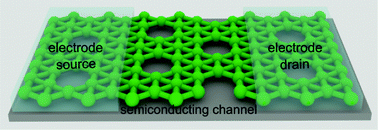Semiconducting α′-boron sheet with high mobility and low all-boron contact resistance: a first-principles study†
Abstract
Two-dimensional field effect transistors (2D FETs) with high mobility semiconducting channels and low contact resistance between the semiconducting channel and the metallic electrodes are highly sought components of future electronics. Recently, 2D boron sheets (borophene) offer a great platform for realizing ideal 2D FETs but stable semiconducting phases still remain much unexplored. Herein, based on first-principles calculations and tight-binding model, we first clarify that α′-boron is the most stable semiconductor phase of boron sheets, while reveal the mechanism of metal-to-semiconductor transition from α- to α′-boron. Then we demonstrate that the carrier mobility in α′- and metastable β3S-boron should be very high, due to small effective masses of electrons and holes, as a good candidate material for 2D FETs. Considering further the lateral contacts between semiconducting α′ and metallic borophene, we find that the α′- and β3S-boron sheet can form Ohmic contacts with selected metallic boron sheets, without Schottky barrier. The high energetic stability and excellent mobility properties of α′-boron sheet together with its good contact match to metallic borophene electrodes are promising for fully boron-based FETs in the real 2D atomically thin limit.

- This article is part of the themed collections: 2021 Nanoscale HOT Article Collection and Editor’s Choice: Computational studies of nanomaterials for energy, catalysis and electronics


 Please wait while we load your content...
Please wait while we load your content...
